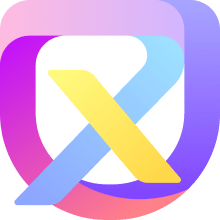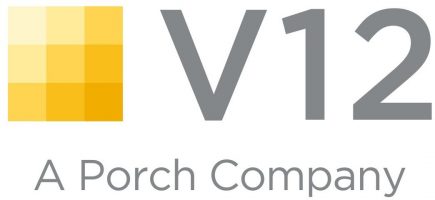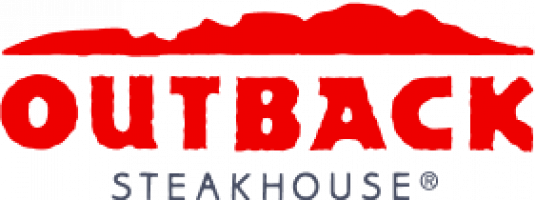Advent Health Employee Portal Microsoft Server On-Prem Migration
A Portal Leading to Employee Engagement, Productivity and Satisfaction
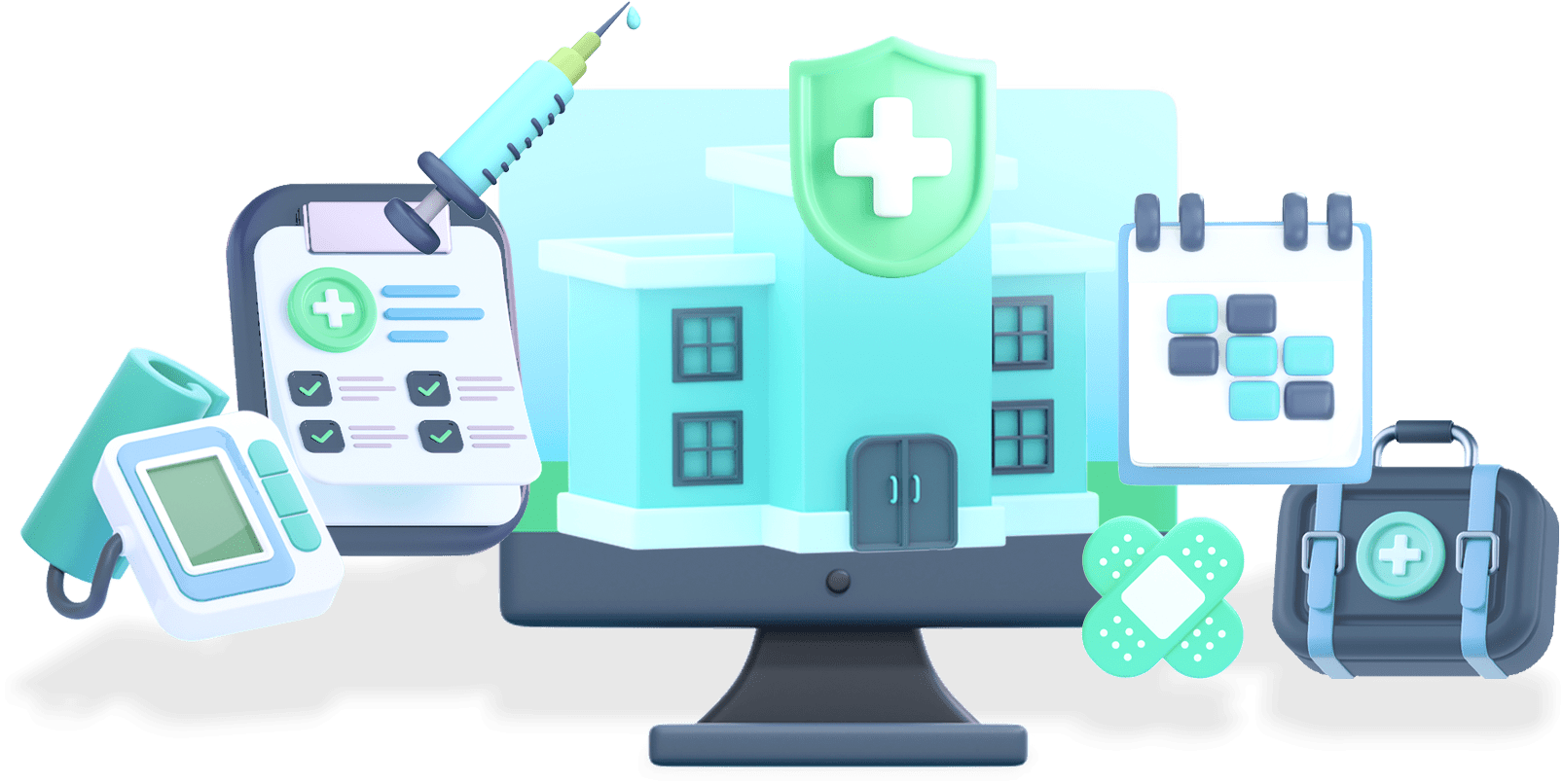

Introduction
Idea Refinement and Validation
The Adventist Health System identified significant limitations with their existing SharePoint-based intranet, noting it was cluttered, outdated, and failing to meet the evolving needs of its users. Driven by a commitment to enhance employee engagement, collaboration, and productivity, the organization embarked on a transformative journey to overhaul their digital workspace. This introduction lays the groundwork for an in-depth exploration of the methodologies employed and the substantial changes enacted, aiming to create a more intuitive and engaging intranet experience. The project was strategically initiated to address long-standing issues such as poor navigation, inefficient search functionalities, and inadequate mobile support.
By focusing on user-centered design principles, the project aimed to transform the intranet into a vital resource that empowers employees and enhances their day-to-day work experiences. This narrative sets the stage for a detailed examination of the challenges faced, the approach taken to address these challenges, and the outcomes of the redesign efforts. The initiative promised to not only support business operations but also foster a dynamic work culture, reflecting the broader objectives of enhancing connectivity and supporting a more responsive organizational culture.
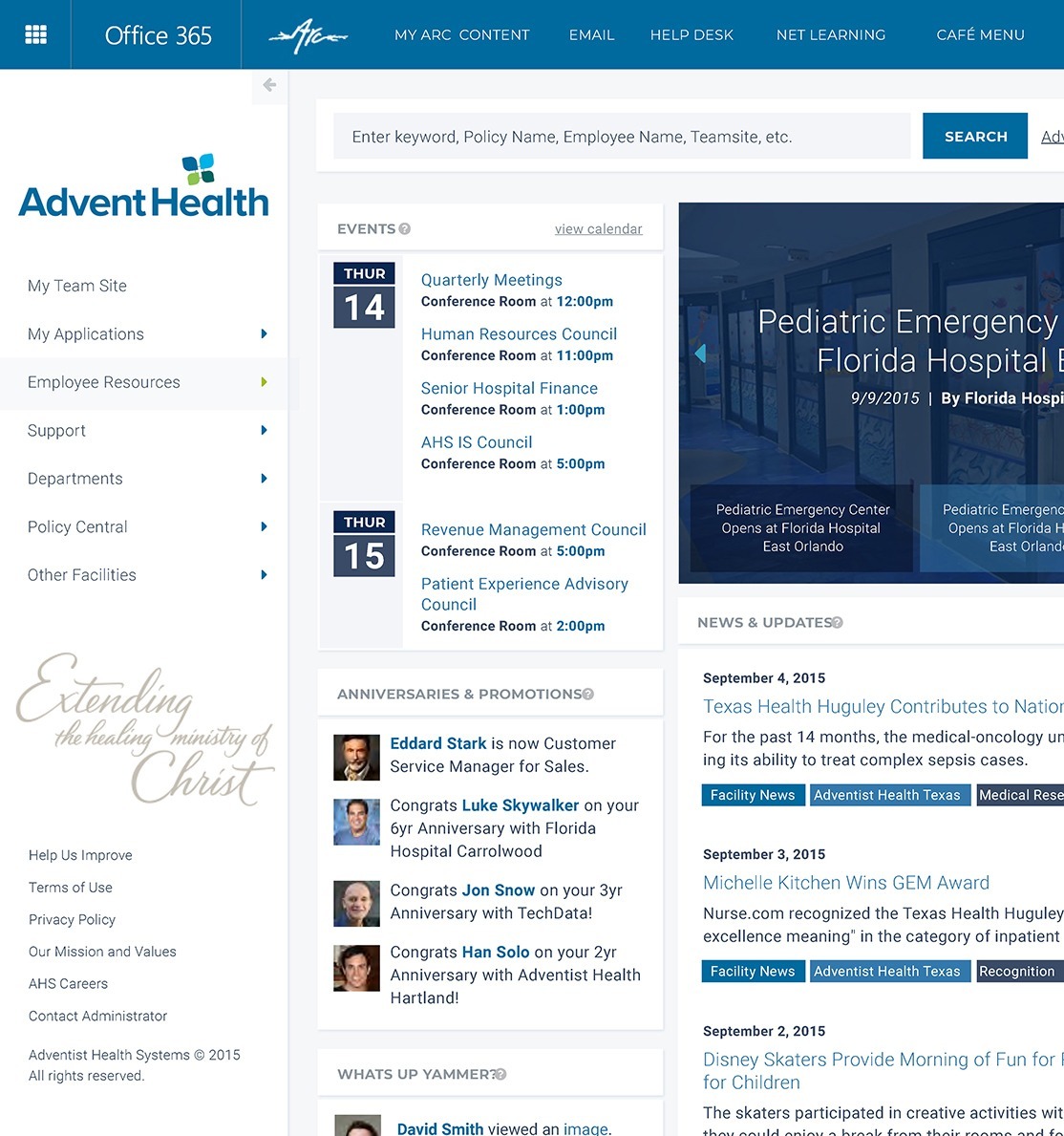
my tools
The tools I used on this project...
persona
The Field Nurse
- Primary Goals: Wants to access patient care protocols, staff schedules, and compliance training materials quickly and easily.
- Pain Points: Frustrated by slow load times and difficulty finding specific documents on the current intranet. Needs to access information both at her desk and on the go via a tablet.
Expectations from the Intranet:
- Fast and intuitive navigation.
- Mobile-friendly interfaces that allow her to access information while moving around different parts of the hospital.
- Reliable search functionality that provides quick and accurate results.
persona
The IT Manager
- Primary Goals: Needs to troubleshoot issues quickly and access IT support documents and software management tools.
- Pain Points: Frustrated with the outdated interface and the lack of integration with modern IT support tools. Finds the current search functionality inadequate for his technical queries.
Expectations from the Intranet:
- High level of customization and personalization options to tailor his dashboard with frequently used resources.
- Advanced search capabilities that can handle complex queries.
- Integration with existing IT management tools and databases for seamless workflow.
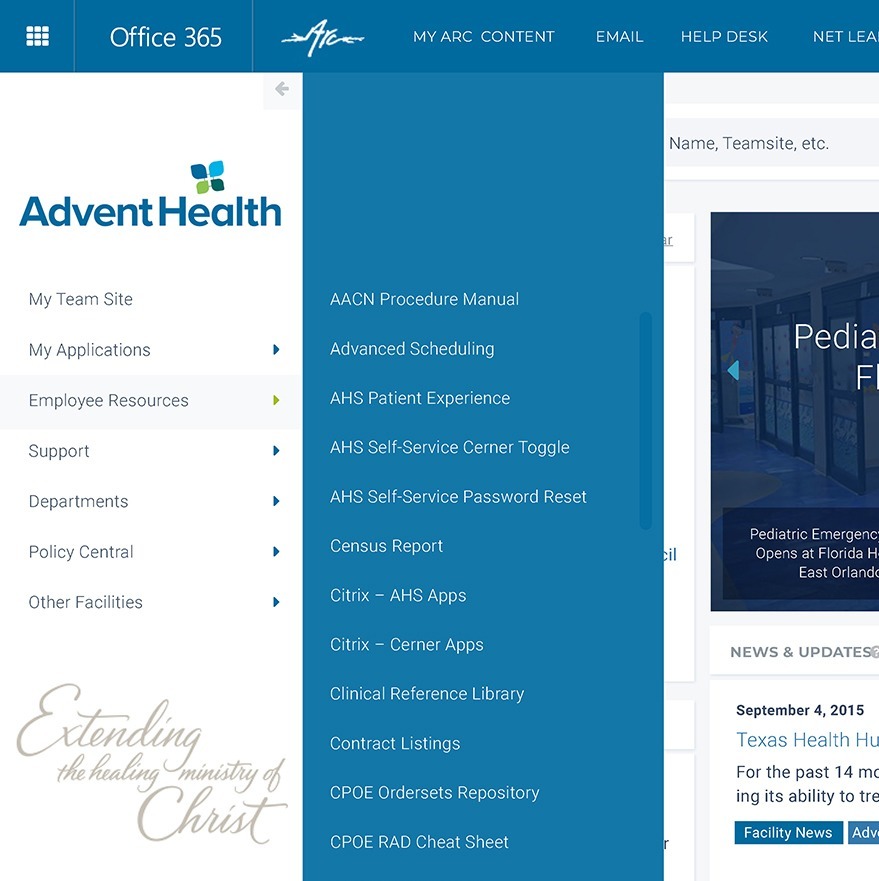
the challenge
Overcoming Digital Obstacles
The initial challenges were immediately apparent: a convoluted navigation system, ineffective search functionality, and a lack of mobile accessibility. These barriers disrupted daily operations and negatively impacted employee satisfaction and productivity. The urgency for a comprehensive overhaul was clear, prompting decisive action to address these issues. This section delves into the specific challenges that triggered the redesign and outlines the ambitious goals aimed at creating a streamlined digital environment. Employees frequently expressed frustrations with the outdated interface and the difficulty in locating critical information, which often led to decreased efficiency and a reliance on less secure communication and data storage methods.
Moreover, the lack of mobile accessibility hindered the ability of staff to work effectively while on the go, essential for a modern workforce. The redesign aimed to address these multifaceted issues by reimagining the intranet as a central hub for all organizational needs, supporting a shift towards more collaborative and agile work practices.

the approach
Design Thinking At Its Finest
The transformation process began with an extensive user experience (UX) research phase, involving detailed end-user interviews, comprehensive card sorting sessions, and focused task priority settings. Each method was meticulously planned and executed to garner deep insights from the actual users of the intranet, ensuring that the redesign was anchored in addressing real, articulated needs and preferences. This segment describes each step of the systematic approach adopted to collect data, analyze it, and formulate a strategic plan that would underpin the development of a more user-centric intranet.
The end-user interviews were particularly revealing, offering raw, unfiltered feedback that highlighted both the deficiencies and the potential of the existing system. During the card sorting activities, employees engaged directly with the proposed changes, helping to redefine the information architecture to ensure intuitive navigation and organization of content. Task priority sessions allowed the project team to identify and prioritize the critical components of the intranet based on daily use and importance, directly influencing the design of the homepage and other key interfaces.
the results
Crafting a Cohesive Digital Solution
The insights gained from the UX research phase proved pivotal in shaping the redesigned intranet. A key focus was streamlining navigation, enhancing search capabilities, and improving mobile accessibility, transforming the intranet into a robust tool for collaboration and information dissemination. :
- Customizable User Dashboard: Implementation of a personalized dashboard allowing employees to tailor the information and tools accessible upon login, catering to individual needs and preferences.
- Streamlined Navigation: Redesign of the intranet’s navigation system to ensure intuitive access to various sections and resources, minimizing clicks and improving user flow.
- Enhanced Search Functionality: Development of a robust search engine within the intranet, capable of delivering accurate, relevant results quickly through advanced filtering and search algorithms.
- Mobile Accessibility: Ensuring the intranet is fully responsive and accessible on all devices, including smartphones and tablets, to support on-the-go access for all employees.
- Content Management Optimization: Regular audit and update of intranet content to remove obsolete information, implement document versioning, and ensure all content is current and relevant.
- Social Collaboration Tools: Integration of social collaboration platforms like Yammer to facilitate communication and collaboration among employees, transforming the intranet into a dynamic, interactive workspace.
- User Engagement and Feedback Mechanisms: Incorporation of features that promote user engagement, such as polls, forums, and feedback channels, allowing continuous improvement based on user input.
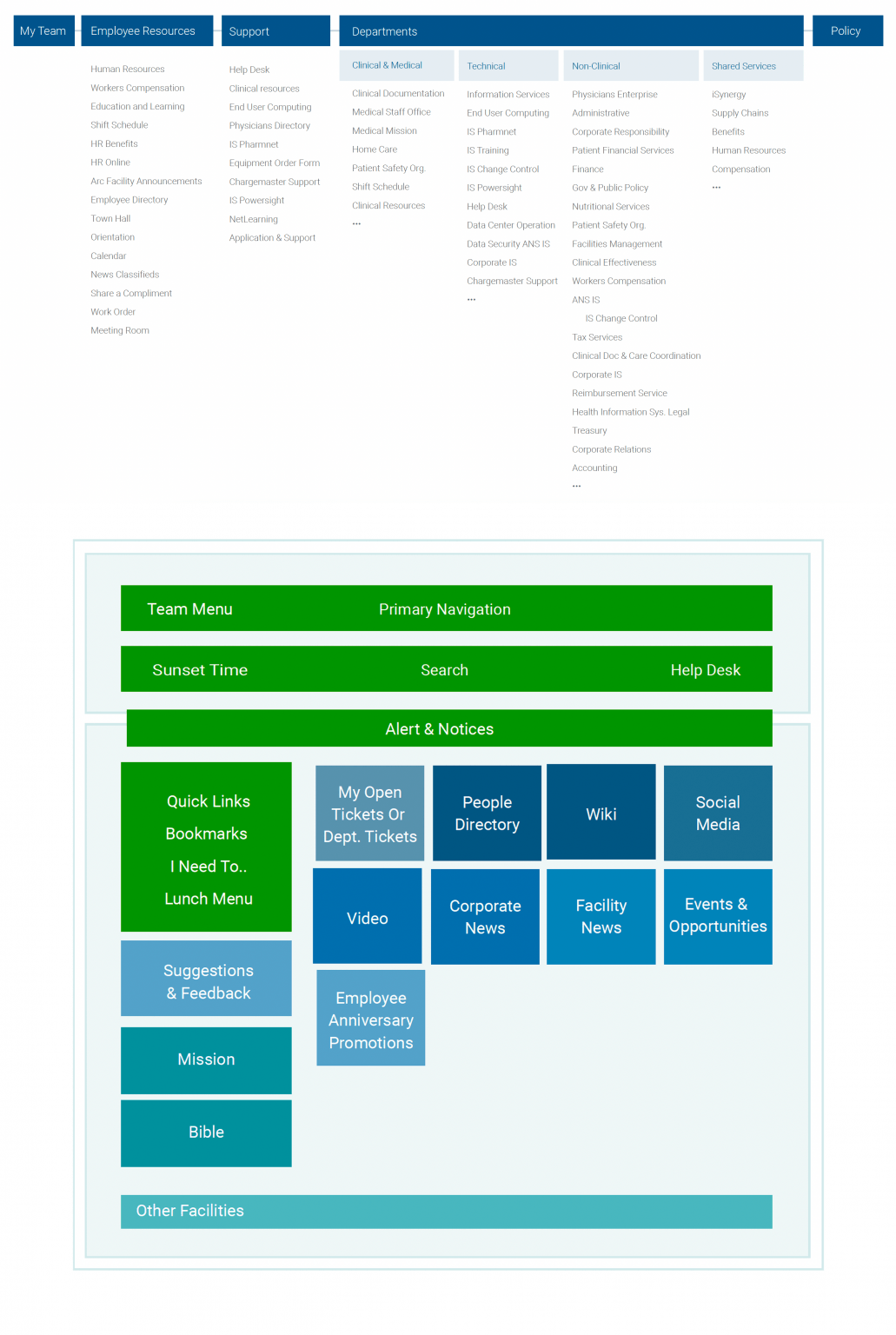
Portfolio
Check out some more posts...
Let's Connect
Let's Work Together to Transform Your Product!
Are you looking to elevate your product’s user experience to unparalleled heights? Whether you’re seeking to refine your existing product or embark on creating something entirely new, my expertise in user research, interaction design, and strategic planning can guide your project to success. Let’s collaborate to create meaningful and impactful user experiences that resonate with your audience and set your company apart.
Ready to transform your user experience? Let’s discuss how we can achieve remarkable results together. Reach out to me today, and let’s set the foundation for your product’s success.
